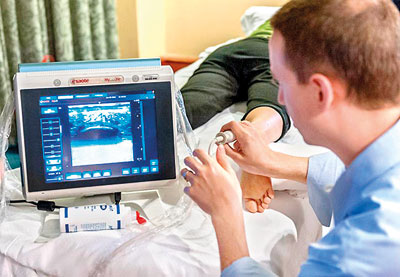Sunday Times 2
Focus on sports injuries as Sri Lanka College of Radiologists celebrates International Day of Radiology

Musculoskeletal Imaging is a fast expanding branch of diagnostic radiology
On November 8, the Sri Lanka College of Radiologists, the professional body representing radiologists in the country, joined the world radiology community in celebrating International Day of Radiology 2019. This year’s theme was ‘Sports and Musculoskeletal Imaging’.
The International Day of Radiology is an annual event held since 2012 with the aim of building greater awareness of the value that radiology and radiologists contribute to safe optimum patient care and improving understanding of their disease processes.
November 8, the day that Wilhelm Conrad Rontgen discovered the x-rays in 1895, was chosen as a day of action and awareness to alert the world to the stunning possbilities of medical imaging, the essential role of the radiologist as a part of the medical team in countless scenarios and their high educational and medical standards.
Today, Radiology has emerged as one of the most important branches in medicine, continuing to develop in leaps and bounds, helping to save countless lives. Now in Sri Lanka, too, radiologists render a valuable service as specialised medical professionals in patient management, disease prevention, health screening etc.
Musculoskeletal Imaging is a fast expanding branch of diagnostic radiology that plays an increasingly important part in the assessment and management of patients with a wide variety of bone, soft tissue, and joint injuries. Within this subspecialty, a new discipline has also emerged, sports imaging. On International Day of Radiologists, the crucial role of imaging in the diagnosis, prognosis and treatment of sports injuries and the significance of understanding the anatomy, biomechanics and surgical treatment options are highlighted.
Whether it is professional athletes, amateurs, or others awaiting imaging examinations to help determine prognosis or the central role that imaging plays at sporting events, or the pivotal role of imaging in the care of adult or paediatric, all of them fall under the umbrella of Sports Medicine. The development of ultrasound and magnetic resonance imaging in particular over the last 20 years, has resulted in the superior visualisation of tendons, ligaments and cartilage, giving increased importance to medical imaging in the diagnosis and treatment of sports related injuries.
Radiologists play an important expanding role in the clinical management of those involved in sports at various levels. Now diagnostic imaging has shifted towards the onsite detection of trauma and overuse. With new technologies in ultrasound, Multi Detector Computing Tomography (MDCT) and Magnetic Resonance Imaging (MRI), the ability to identify subtle findings has been pushed forward enormously. This has enabled the detection of slight stress reactions of the bones, patterns of tendinopathies, muscle trauma; and bone marrow oedema.
The ability to detect such problems and abnormalities at early stages has helped sports imaging move further into the field of prevention as well. Tendon rupture, secondary osteoarthritis and fractures can often be avoided by spotting early signs.
The Sri Lanka College of Radiologists aligned with this year’s theme by highlighting the contribution of radiology in the care of sports injuries.
(The writer is a Consultant Radiologist at the National Hospital, Sri Lanka)

